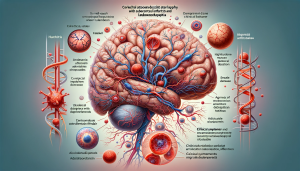
Abstract: This article offers a comprehensive review of the atypical presentation of myocardial infarction (MI) in women, emphasizing the pathophysiological underpinnings, clinical manifestations, diagnostic challenges, and therapeutic implications.
1. Introduction: Myocardial infarction, a leading cause of morbidity and mortality globally, often presents differently in women compared to men. Recognizing these atypical presentations is crucial for timely diagnosis and treatment.
2. Pathophysiological Variations: The pathophysiology of MI in women often involves microvascular dysfunction or spontaneous coronary artery dissection, in addition to the classic atherosclerotic plaque rupture seen in men. These differences may contribute to the atypical clinical manifestations.
2.1 Hormonal Influence: Estrogen is known to have a protective effect on the vasculature. Postmenopausal women, with reduced estrogen levels, exhibit a different pattern of coronary artery disease (CAD), often with a higher burden of microvascular disease.
3. Clinical Manifestations: Women with MI may not always present with the classic symptom of chest pain. Atypical symptoms include fatigue, dyspnea, nausea, epigastric pain, and palpitations. These symptoms are often under-recognized, leading to delays in seeking medical attention.
3.1 Gender-based Symptomatology: Studies indicate that women are more likely to report non-chest pain symptoms during an MI. Such atypical presentations can lead to misdiagnosis or underestimation of the severity of the condition.
4. Diagnostic Challenges: The atypical presentation in women can pose diagnostic challenges. Electrocardiogram (ECG) findings and biomarker levels, such as troponins, may not always conform to typical patterns seen in male MI patients, necessitating a high index of suspicion.
4.1 Imaging and Functional Testing: Non-invasive imaging techniques like echocardiography, stress testing, and cardiac MRI play a crucial role in diagnosing MI in women, especially in the presence of atypical symptoms.
5. Therapeutic Implications: There is a need for gender-specific approaches to the management of MI. Treatment should be tailored, taking into consideration the unique pathophysiology and clinical presentation in women.
5.1 Risk Factor Modification: Addressing traditional and female-specific risk factors, including hypertension, diabetes, and menopausal status, is vital in the preventive strategy for MI in women.
6. Conclusion: Understanding the atypical presentation of myocardial infarction in women is imperative for effective diagnosis and management. Increased awareness and gender-specific diagnostic and therapeutic strategies are essential to improve outcomes in this population.








